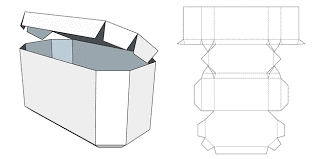
The Art and Science: Packaging Design
In the bustling world of retail and e-commerce, packaging design is an often underappreciated hero. It’s the first physical interaction a consumer has with a product, and it can make or break the purchasing decision. Effective packaging design is a blend of art and science, encompassing aesthetics, functionality, and psychological impact. Here’s a deep dive into the essential aspects and considerations of packaging design for retail and branding.
1. Understanding Your Brand and Audience
Before diving into the packaging design process, it's crucial to understand your brand identity and target audience. Packaging should reflect the brand's personality and values while resonating with the intended consumers.
- Brand Identity: Define the core elements of your brand, such as logo, color scheme, typography, and overall style. These elements should be consistent across all packaging to ensure brand recognition.
- Target Audience: Consider demographics, preferences, and buying behaviors of your target market. Packaging that appeals to young adults may differ significantly from packaging aimed at seniors.
2. Functionality and Practicality
Packaging design must be functional and practical, ensuring the product is protected, easy to use, and convenient to store.
- Protection: The primary role of packaging is to protect the product from damage during transportation and storage. Choose materials that are durable and appropriate for the product’s nature.
- Usability: Packaging should be easy to open, close, and use. Consider ergonomics and convenience in design, ensuring consumers have a positive experience.
- Storage: Think about how the packaging will be stored both in retail environments and in consumers' homes. Compact, stackable designs can be advantageous.
3. Sustainability and Eco-Friendliness
With growing environmental concerns, sustainable packaging design is becoming increasingly important in retail and branding.
- Materials: Opt for recyclable, biodegradable, or reusable materials. Avoid excessive packaging and consider minimalist designs that reduce waste.
- Production: Evaluate the environmental impact of the production process. Choose suppliers and manufacturers who adhere to sustainable practices.
- Messaging: Clearly communicate your packaging’s eco-friendly attributes to consumers, as this can be a significant selling point.
4. Visual Appeal and Branding
Aesthetics play a critical role in packaging design by catching consumers’ eyes and conveying brand values.
- Color: Colors evoke emotions and associations. Choose a color palette that aligns with your brand identity and appeals to your target audience.
- Typography: Fonts should be readable and reflective of the brand’s personality. Use typography to highlight key information and guide the consumer’s eye.
- Imagery: High-quality images, graphics, and illustrations can enhance visual appeal and convey the product’s benefits and usage.
5. Clear and Informative Labeling
Packaging design should provide all necessary information clearly and concisely.
- Product Information: Include essential details such as product name, description, ingredients, usage instructions, and expiration date.
- Compliance: Ensure packaging meets regulatory requirements for labeling, especially in industries like food, cosmetics, and pharmaceuticals.
- Barcodes and QR Codes: These elements are crucial for inventory management and can provide additional information or interactive experiences for consumers.
6. Innovative Design and Technology
Embrace innovation in packaging design to stand out in a crowded retail marketplace.
- Unique Shapes and Structures: Non-traditional shapes and structures can make packaging more memorable and engaging.
- Smart Packaging: Incorporate technology such as QR codes, NFC tags, or augmented reality to create interactive experiences and provide additional value to consumers.
- Personalization: Customizable packaging options can create a unique experience for consumers and foster brand loyalty.
7. Cost Efficiency
Balancing quality and cost are essential for sustainable business practices in packaging design.
- Material Costs: Choose materials that provide the best balance between quality and cost. Bulk purchasing can often reduce costs.
- Production and Logistics: Design packaging that is efficient to produce and transport. Consider factors like weight and space to minimize shipping costs.
- Waste Reduction: Streamline the packaging process to reduce waste and improve cost efficiency.







